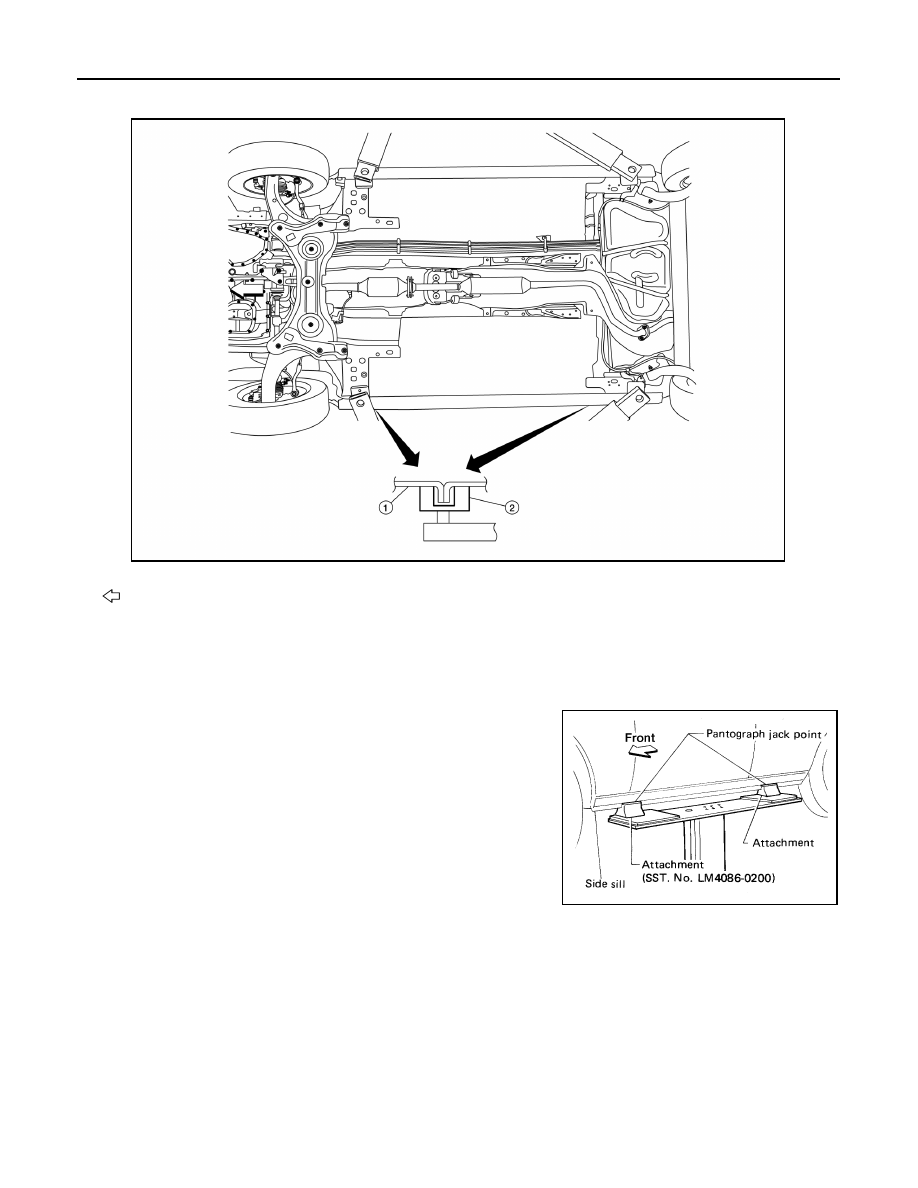Nissan Versa Sedan. Instruction - part 464

GI-38
< PRECAUTION >
LIFTING POINT
When setting the lift arm, do not allow the arm to contact the brake tubes, brake cable, fuel lines and
sill spoiler.
Board-on Lift
INFOID:0000000009266901
CAUTION:
Make sure vehicle is empty when lifting.
• The board-on lift attachment (LM4086-0200) set at front end of
vehicle should be set on the front of the sill under the front
door opening.
• Position attachments at front and rear ends of board-on lift.
Vehicle front
1.
Sill
2. Lift pad
ALAIA0039ZZ
AGI016